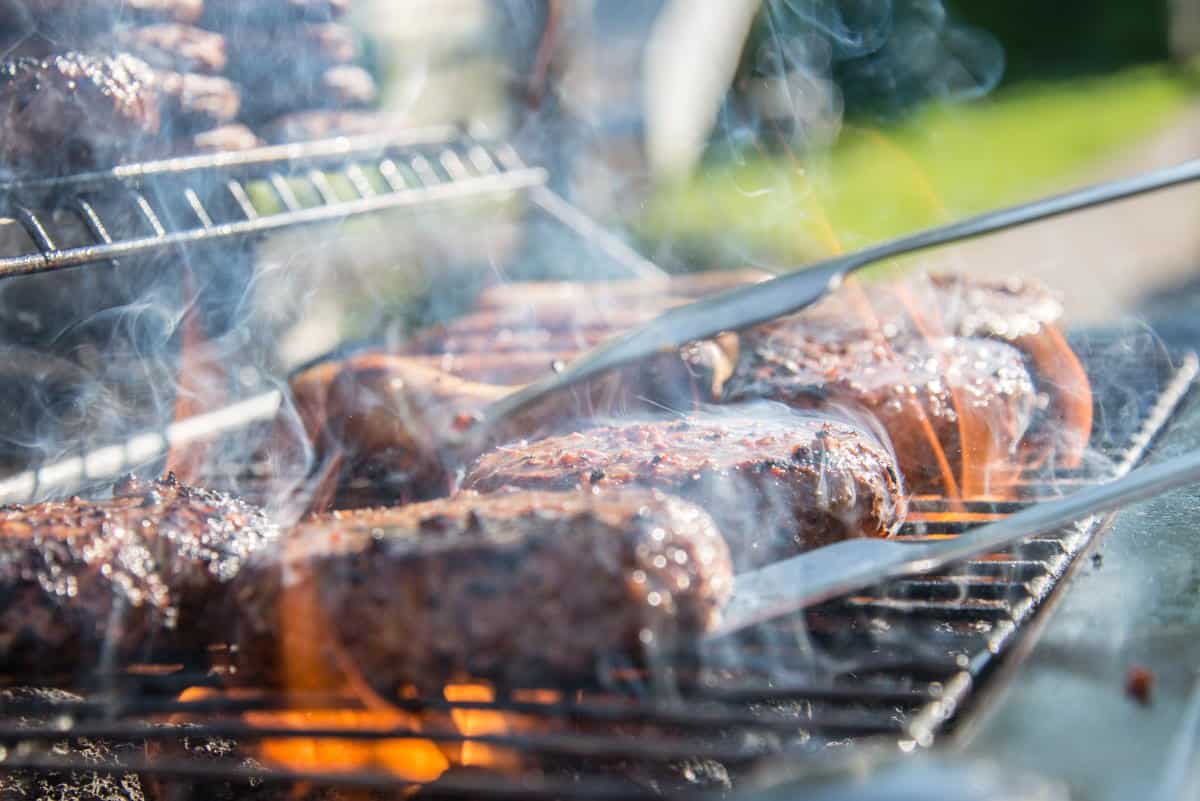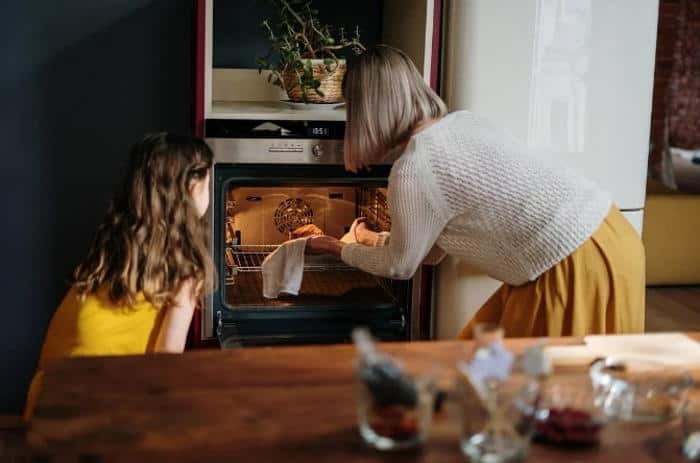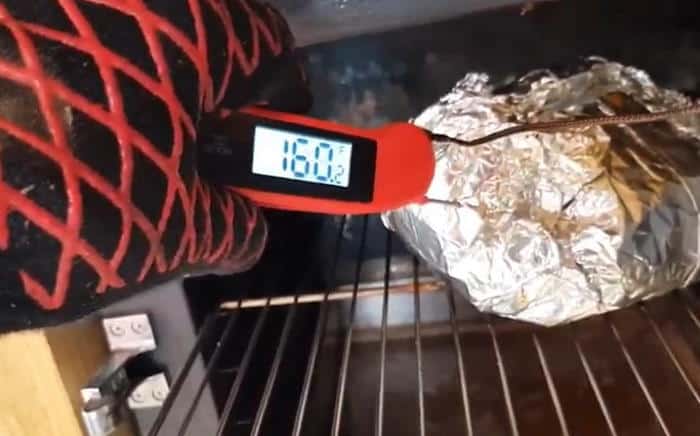
Why Must Meat Be Cooked to a Minimum Internal Temperature?
Meat products like chicken, pork, beef, and lamb are packed with nutrients that your body needs. Some of these nutrients include protein, iron, iodine, zinc, and vitamin B12. Due to their nature and source, they also harbor bacteria such as E. coli, Salmonella, Campylobacter, and Listeria monocytogenes that can cause serious foodborne diseases. This is why it is important to cook meat to a minimum internal temperature.
While food experts say meats are considered safe to eat when cooked at the right temperature long enough (as it kills harmful bacteria on the meat), different types of meat, sizes, cuts, and different types of cooking methods may require different minimum internal temperature and cooking times.
Table of Contents
Why must meat be cooked to its minimum internal temperature?
The World Health Organization (WHO) says that most known germs can be killed at temperatures above 149°F (65°C).
All types of bacteria have their specific environment and temperatures that are optimal for them to best thrive. Most bacteria and viruses that are pathogenic to humans can be killed through heating to 165ºF (74°C) or more within just minutes of cooking.
This is because heat breaks the structure of bacteria, making them unable to function and multiply. Cooking also kills most food-borne germs, such as salmonella (bacteria commonly found in uncooked poultry products and eggs that can cause diarrhea and vomiting).
When cooking food, however, it must be heated properly all the way through – this is what ‘internal temperature’ is about, and you can only determine this through a food thermometer.
Raw meat and poultry must be heated to at least 145°F (63°C) for whole cuts or steaks of pork, lamb, and veal. Ground meats, on the other hand, must be cooked at 160°F (71°C) and poultry at 165°F (74°C).
Leftover or reheated food must be heated to at least 165°F (74°C) and must be properly stored in a container in the fridge within a couple of hours of cooking to keep bacteria from thriving.

So how do you properly cook meat?
Here’s a quick guide on how to safely cook different types and cuts of meat.
145°F (63°C): Beef (steak or roast), veal, lamb, chops, mutton, pork, ham, venison (steak or roast), bison (steak or roast), fish (salmon, tuna, bass, cod, etc.) and shellfish.
160°F (71°C): Most fresh meats, ground beef, lamb, bison, and venison, fresh or raw ham
165°F (74°C): Poultry, game birds, ground poultry, ham (precooked and reheated)
If you are cooking fresh beef, pork, lamb, veal, elk, deer, moose, etc., here are the temperatures you need to remember for correct doneness; 160°F (71°C) for medium, while 170°F (77°C) for well done.
There are times (or types of protein) that you can’t use a thermometer to measure the internal temperature. Some examples are crabs, lobsters, shrimp, and scallops. In this case, you have to cook them until their flesh looks opaque or pearly white. For clams, mussels, and oysters, you need to cook them until their shells open up.
You can stick a meat temperature chart magnet on the refrigerator or grill, to check the temperature at any time.
So how do you take the temperature of meat?
Even the best chefs in the most highly decorated Michelin-star restaurants have meat thermometers in their kitchens. This is because unless you have infrared powers in your eyes, it is impossible to tell the internal temperature of the meat or if it is thoroughly cooked just by looking, smelling, and tasting.
So to determine the internal temperature of the meat, you need to use a meat thermometer.
To use a meat thermometer, insert the probe of the thermometer into the thickest part of the meat near the end of the cooking time before the meat is expected to be done. The tip of the probe should not touch the bone, fat, or gristle.
For burger patties and chicken breasts, insert the probe through the side of the meat. If you are dealing with multiple pieces of meat, then check the temperature of each slice to ensure each slice is thoroughly cooked.
After cooking the meat, let it sit for at least three minutes before slicing or eating. This is called “rest time” where the meat keeps (or continues to rise) its temperature to kill harmful germs.
For cuts like steaks, resting gives the meat the chance to redistribute its juices inside, creating juicier and more tender meat. Cutting the meat straight away after cooking will cause the juices to b ereleased, leaving the meat brown and overcooked. A 10-minute rest is a general rule. But for thicker slices of meat, you have to give it more time to rest, which should be 5 minutes for every inch of thickness.

How to get a meat thermometer?
As with most cooking tools, meat thermometers are available in your local stores, hardware and home supplies stores, and of course, online. However, you should know that there are different types of food thermometers specifically designed for different types of cooking and food. Here are the four most common types of food thermometers you can find:
Digital instant-read thermometers – To use this type of thermometer, you have to insert it about half an inch deep into the meat as it cooks. This thermometer can provide an accurate reading in as fast as 10 seconds.
- Dial instant-read thermometers – To use this type of thermometer, insert the probe into the thickest part of the meat up to 2 to 2.5 inches deep. Unlike the previous one, this type cannot stay inserted into the food while it cooks. This thermometer can provide a temperature reading in as fast as 15 to 20 seconds.
- Oven-safe thermometers – As its name suggests, this thermometer can stay inside the oven as the meat is being cooked. Insert the probe 2 to 2.5 inches deep into the thickest part of the meat. It will give an accurate reading in two minutes.
- Pop-up thermometers – This type of thermometer is commonly found in poultry and may even come packed with chicken or turkey. As its name suggests, it pops up when the meat reaches its safe and minimum internal temperature.
Note that not all thermometers are made equal. Though the price is not the deciding factor for quality, as with most things in life, you get what you pay for when shopping for cheap meat thermometers. With that said, you don’t have to spend a lot for a good quality meat thermometer. The best thing you can do is to do your own homework and read reviews of the thermometers you want to get.
Also, when shopping for a meat thermometer, consider the type of meat and the method of cooking you usually do. If you barbecue frequently, then it is best to invest in high-quality, heavy-duty, multi-use thermometers, as they will last longer.
2 Comments
Comments are closed.
Discover Other ChefsTemp Products
Discover more recipes and learn kitchen tricks by joining our cooking family on Facebook.
You may also like:
















[…] probe thermometer is still your best option to monitor internal meat temperature. Therefore, you must rely on something other than this tool when cooking specific types of meat […]
[…] however, it is still best to use the probe thermometer, as inserting the probe is the only way to measure the internal temperature of the meat. It is essential, especially when working with thicker-cut meats that need to be brought (and […]